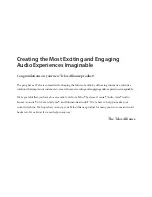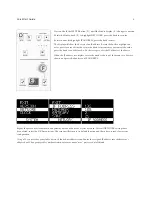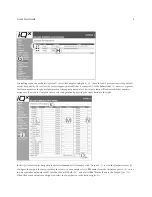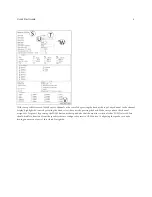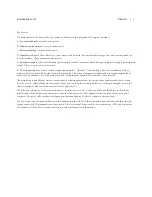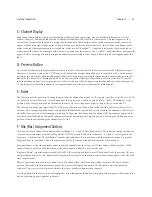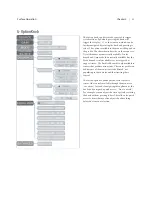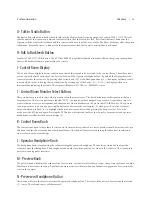
Chapter 1 |
8
Introduction to iQx
iQx Surface
The main surface is the heart of the iQx system. In addition to the integrated DSP engine, it includes:
A - 8 console channels
(covered in chapter 2)
B - Monitor control section
(covered in chapter 2)
C - Meter overbridge
(covered in chapter 2)
D - Dual network ports
: These allow for a connection to the network (the port furthest from power) and for connection to a
local IO product (the port nearest to the power).
E - Dual power inputs
: Allow for redundant power supply for those concerned about having a single power supply powering the
system. The two inputs are diode steered.
F - Two expansion ports
: For use with the expansion modules (“sidecars”) from the iQ product line, available in 8-fader,
6-fader with Telco, and 6-fader with User buttons modules. The optional expansion modules allow for expanding the fader
count up to 24 channels (two 8-fader sidecars) and/or adding user-friendly Telco control or User buttons.
The main module and all three sidecars are designed for tabletop placement (no cutouts in the table are needed other than
for wire access). When adding sidecars to the system, you can keep them as unique chassis (as they are shipped) or join the
chassis together to make a unified console (refer to Appendix A).
All of the iQx settings are set from a web interface (browser-accessed UI). At first you will set an IP address to the unit by
interfacing with the hardware on the surface. Once the IP address is set, all configuration is done from a browser on your
computer. Chapter 3 will cover basic configuration items and chapter 5 will cover the more obscure items.
The iQx system was designed with latest AoIP standards in mind. AES67 is the target audio transport and with that, the iQx
system requires a PTP grandmaster on the network. Native Livewire® functionality of advertisement, GPIO, and control are
still supported. Other discovery and control protocols are planned for in the product.





